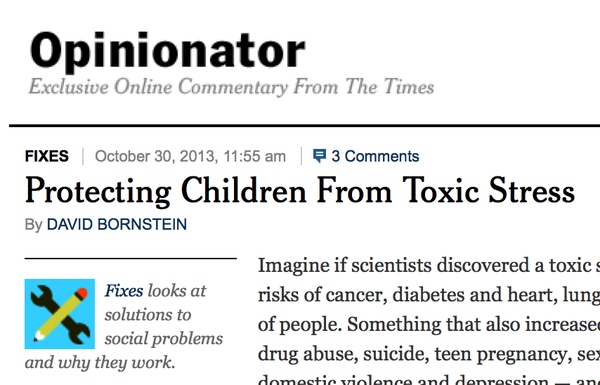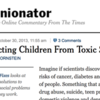 In his Fixes column in the New York Times, David Bornstein focused on the work of Child FIRST:
In his Fixes column in the New York Times, David Bornstein focused on the work of Child FIRST:
Child FIRST teams visit families once a week for six to 12 months, or longer, with the goal of stabilizing the family. They begin by establishing trust, listening and understanding the family’s priorities. If the first thing a mother says is, “I want beds for my children,” then that’s step one. The engagement is guided by an evidence-based methodology called Parent-Child Psychotherapy, which is grounded in collaborative problem solving.
In this process, “the therapist does not present herself as the expert, but as a partner in seeking solutions together,” explains Alicia Lieberman, director of the Child Trauma Research Program at the University of California, San Francisco, who led the development of this practice. It’s essential that the therapist responds in a caring and nonjudgmental manner. “Many parents worry that something is basically wrong with them,” says Lieberman. “It brings tremendous relief to hear that they are not ‘bad.’ And when they see the therapist believing in them and joining in their efforts to overcome problems, a different attitude gets established about themselves and their child.”
http://opinionator.blogs.nytimes.com/2013/10/30/protecting-children-from-toxic-stress/



Comments (1)